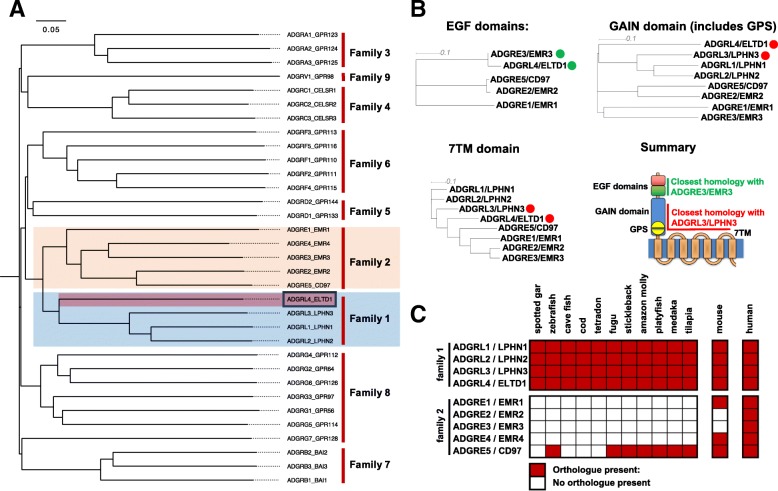Fig. 4.
ADGRL4/ELTD1 is most similar to ADGRL3/LPHN3 and ADGRE3/EMR3 and is likely to be an evolutionary ancestral to members of aGPCR family 2. a Phylogenetic tree displaying the genetic difference between all aGPCRS showing that aGPCR family 1 (which contains ADGRL4/ELTD1) shares its common ancestor with family 2. b Phylogenetic comparisons between domains belonging to members of aGPCR Family 1 and Family 2 reveals that ADGRL4/ELTD1’s EGF domains are most closely related to ADGRE3/EMR3’s EGF domains and ADGRL4/ELTD1’s GAIN domain, GPS motif and 7TM domain are most similar to the respective domains in ADGRL3/LPHN3. The coloured dots highlight ADGRL4/ELTD1 and the closest relative for the domain being compared amongst all compared members. The colouring represents whether the closest relative (for the domain being compared) is a member of aGPCR family 1 (red) or 2 (green). c Heatmap detailing the presence of orthologue in the first true vertebrates (bony fish) reveals that ADGRL4/ELTD1 evolved before the incorporation of aGPCR family 2 into the vertebrate genome and because of its domain composition is likely to be ancestral to members of aGPCR family 2

